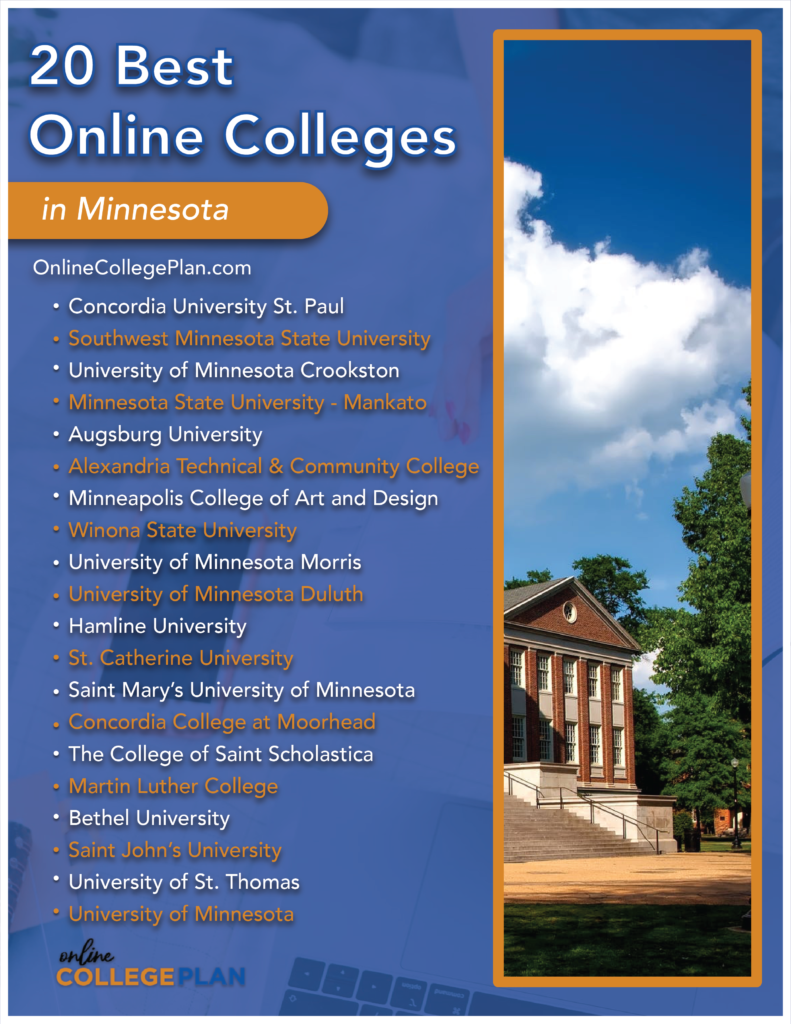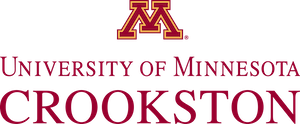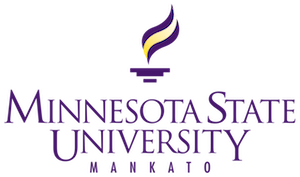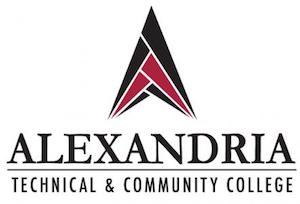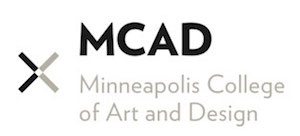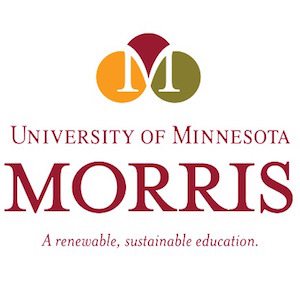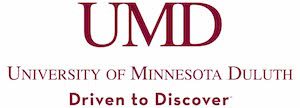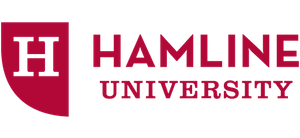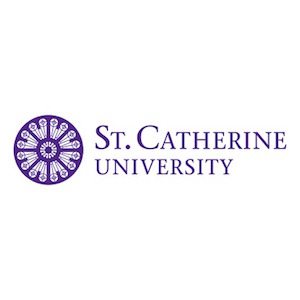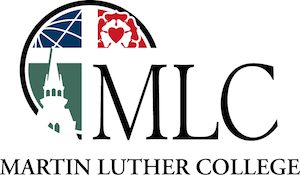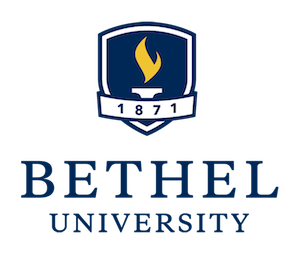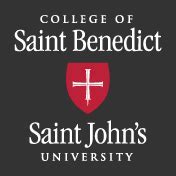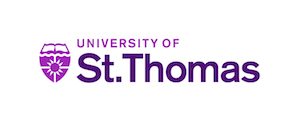Top 20 Best Online Colleges in Minnesota
Find your degree


For this Top 20 Best Online Colleges ranking, we have scored each school located in Minnesota that offers a selection of online academic programs for distance-learning students. We ranked these online colleges on a scale from 0 to 200 total points, which were awarded based on the combination of two different percentage rates that acted as our scoring criteria. These two standards are the school’s freshman retention rate (what percentage of the school’s freshman students returned for their sophomore year) and their overall graduation rate (what percentage of the school’s students receive their degree in an acceptable amount of time).
The goal of this top 20 best online colleges in Minnesota ranking is to help equip students with the information they need to understand the various options for obtaining a degree in a flexible, online format from a reputable Minnesota school.
The state of Minnesota is one that many Americans tend to forget about; they know that the Mall of America is there, but what else? Minnesota is the birthplace of many ingenious inventions that are still widely used and simplify people’s lives every day, like Scotch tape, the stapler, and the first supercomputer. The state also has more shoreline than California, Florida, and Hawaii combined—a total of 90,000 miles.
The Minneapolis Sculpture Garden is the most extensive urban sculpture garden in America. Also, Minnesota is where the world-renowned Mayo Clinic is located. The clinic is recognized globally for its incredible expert staff and innovative medical techniques. For example, the first open-heart surgery and the first bone marrow transplant in the United States were completed at our top-ranked school, the University of Minnesota!
Whether you want to join the cutting edge of medicine, business, law, or any number of fields, there is a school in Minnesota that will help you achieve your goals.
We’ve created this ranking to help prospective students like yourself learn about the best schools in Minnesota and to help you make your final selection as you take the first step in embarking on one of the biggest things that you will ever accomplish.
Methodology
All of the data used to generate the initial pool of colleges in Minnesota and subsequently rank them came from various reputable sources. The school websites were used whenever possible, plus we also consulted the databases of U.S. News & World Report and the National Center for Education Statistics. In addition, we referred to our previous ranking, the Top 100 Best Online Colleges, in the creation of this piece.
Schools that met the following criteria were eligible for consideration in this ranking:
- The school is an accredited college or university.
- The school has at least one campus in the state of Minnesota.
- The school offers at least one distance-learning option that is available to students regardless of residency and;
- The school is not a for-profit institution.
We created each ranking to help you to not only find an online degree program from a school that suits your needs but one that will provide you with a rigorous and engaging academic experience that is worth every penny.
Related: Check Out Our Top Guides to Online Colleges!
20 Best Online Colleges in Minnesota
| Rank | School | Total Score |
| 20 | Concordia University St. Paul | 112 |
| 19 | Southwest Minnesota State University | 115 |
| 18 | University of Minnesota Crookston | 123 |
| 17 | Minnesota State University-Mankato | 128 |
| 16 | Augsburg University | 131 |
| 15 | Alexandria Technical & Community College | 133 |
| 14 | Minneapolis College of Art and Design | 135 |
| 13 | Winona State University | 138 |
| 12 | University of Minnesota Morris | 139 |
| 11 | University of Minnesota Duluth | 141 |
| 10 | Hamline University | 143 |
| 9 | St. Catherine University | 144 |
| 8 | Saint Mary’s University of Minnesota | 146 |
| 7 | Concordia College at Moorhead | 148 |
| 6 | The College of Saint Scholastica | 150 |
| 5 | Martin Luther College | 156 |
| 4 | Bethel University | 157 |
| 3 | Saint John’s University | 159 |
| 2 | University of St Thomas | 167 |
| 1 | University of Minnesota | 177 |
20. Concordia University St. Paul
The Concordia University System is composed of ten different universities all over America that are operated by the Lutheran Church–Missouri Synod. Concordia University St. Paul was founded in 1863 as a high school where students could be in a Christian learning environment. Over the course of the next decade, it gradually added more years of high school, and then began to add college years as well. It was first accredited as a college in 1921. Currently, it is accredited by the Higher Learning Commission.
There are 43 degree programs and four professional certification programs that are offered by Concordia. The majority of those programs are also online. Of their 4,582 students, 43% of the undergraduate students are pursuing their degree solely online, and 86% of graduate students don’t attend campus either.
Concordia has an incredible distance-learning division. The Associate of Arts in General Studies and Early Childhood Education are both accelerated, and only take 7 weeks to complete. The self-paced Bachelor’s degrees available online cover areas such as Business, Exercise Science, Health Care Administration, Human Resource Management, Information and Technology Management, Marketing, and so many more.
Some online courses are not self-paced, but there are no on-campus visits required for any of the online degree programs at this university. All of the online undergraduate programs feature 7-week courses, and average around 40 credit-hours total. 92% of graduates were employed or continuing their studies within a year of graduation.
Concordia Website: https://www.csp.edu
Freshman Retention Rate: 64%
Graduation Rate: 48%
Final Score: 112/200
19. Southwest Minnesota State University
Southwest Minnesota State University is a public university that is in Marshall, Minnesota. It is one of 37 institutions that make up the Minnesota State Colleges and Universities System. It was founded in 1964 as Southwest Minnesota State College, and the first students began their classes in the Fall semester of 1967. The school updated its name to reflect its university status fairly quickly, becoming Southwest State University in 1975. However, it didn’t get rechristened again until 2003, when it settled on its current name. As a result, most students and faculty regularly refer to the university as SMSU.
The Higher Learning Commission first accredited SMSU in 1972, and it remains accredited through the same agency today. 7,495 students are enrolled into one of the many programs that SMSU has to offer.
Students can choose from over 50 online programs at the certificate, Associate’s, Bachelor’s, and Master’s levels. The majority of their degrees are provided at the undergraduate level. Part-time students represent 71% of the students seeking a degree at the undergraduate level, and around 16% of them take advantage of the distance-learning opportunities that SMSU offers.
Through the Office of Extended Learning and Academic Outreach, several programs are provided that have solid transfer agreements with area schools, and expert faculty that teaches the face-to-face versions of the courses you will be taking. The programs that are available to online students include:
- Accounting
- Community Psychology and Health Promotion
- Early Childhood Education
- Early Childhood Special Education
- Elementary Education
- History
- Management
- Marketing
- Nursing – RN to BSN
- Psychology
- Social Work
- Sociology
- Special Education
- Teaching English as a Second Language
SMSU Website: https://www.smsu.edu
Freshman Retention Rate: 67%
Graduation Rate: 48%
Final Score: 115/200
18. University of Minnesota Crookston
The University of Minnesota Crookston is a public university in Crookston, Minnesota. Founded in 1966 as a two-year college, the school became a baccalaureate degree-granting institution in 1993. Today, it is accredited by the Higher Learning Commission and grants a selection of professional certificates and Bachelor’s degrees. Over 2500 scholars make up the student body at UMC.
Over half of them are considered part-time, and 36% are pursuing one of the fully online asynchronous degrees or certificates available. A further 6% are enrolled in hybrid or blended programs. These are all part of the university’s Center for Adult Learning, and they were created with busy professionals in mind. Coursework is accessible to students 24 hours a day, and there are no set log-in times or mandatory digital lectures.
UMC was the first University of Minnesota to offer online Bachelor’s degrees. They also feature an exceptionally generous transfer policy. Thanks to their accreditation, most of the credits earned through any of their programs—whether on-campus or online—will transfer to most other colleges and universities. Another demonstration of their commitment to the success of their students, as long as you take six credits or more in a single semester, you’re eligible for financial aid. Students that participate in the hybrid programs (in which they take a class or a few classes on the physical campus) will receive a laptop from the school.
The school offers 20 online majors, minors, and certificates. Some of the most popular offerings include:
- Agricultural Communication
- Animal Science
- Applied Health
- Criminal Justice
- Equine Business Management
- Exercise Science and Wellness
University of Minnesota Crookston Website: https://crk.umn.edu/
Freshman Retention Rate: 72%
Graduation Rate: 51%
Final Score: 123/200
17. Minnesota State University-Mankato
Minnesota State University-Mankato is a public university in Mankato, Minnesota. The university is a Minnesota State Colleges and Universities System member, one of just seven schools in that system. It was established in 1868, making it the second oldest member in the system; it is also the second-largest and most comprehensive. The university is accredited by the Higher Learning Commission and eight other agencies that endorse programs in specific fields.
There are 15,165 students presently enrolled and more than 100,000 alumni all over the world. Among them, more than 37 Fulbright Scholars over the past three decades, 12 professional athletes, and many respected politicians and decorated veterans. Traditional courses are offered at the main campus in Mankato and two satellites in Edina and Owatonna. MNSU also operates the College of Extended Learning, with a learning center in Bloomington and many online options.
In addition to the College of Extended Learning, there are seven other colleges and eleven research centers. Thousands of degrees are awarded every year by MNSU. There are 13 professional certificate programs, 120 undergraduate programs, and 75 graduate programs from which students can choose. The school offers four entirely online undergraduate degree programs: Applied Leadership, Bachelor of Business Administration, Dental Hygiene, and RN Baccalaureate Completion.
Additionally, MNSU offers a wide selection of Graduate certificate programs and Master’s programs like English, MA with an emphasis in Technical Communications, Information Security and Risk Management, Spanish for the Professions, and more.
MNSU Mankato Website: https://www.mnsu.edu
Freshman Retention Rate: 77%
Graduation Rate: 51%
Final Score: 128/200
16. Augsburg University
Augsburg University was Augsburg College until the first of September in 2017. It had been Augsburg College since 1963. The school itself was established as a seminary in 1869. During its development, some of its other titles were The Norwegian Danish Evangelical Lutheran Augsburg Seminary, Augsburg Seminary, and Augsburg College and Theological Seminary. Augsburg University today enrolls 3,014 students and is accredited by the Higher Learning Commission.
Augsburg offers degrees at the Bachelor’s and Master’s levels. There are more than 50 different degree programs that students can choose from to reach their goals. In addition, the school offers distance-learning opportunities to adults starting school after the traditional window has passed or those who began to pursue a degree and didn’t finish. While no degree program is advertised as being entirely online, students can make course selections that follow a hybrid format. Those include:
- Business (Accounting, Finance, Business Administration, Economics, Marketing)
- Education (Elementary Education, English as a Second Language, Special Education: Academic Behavioral Strategist)
- Nursing (BSN completion)
- Psychology
There are also opportunities in interdisciplinary studies, and Augsburg offers a Student-Designed Major program so that all the courses you take are directly relevant to the education you need to enter the career you want.
Augsburg Website: https://www.augsburg.edu
Freshman Retention Rate: 72%
Graduation Rate: 59%
Final Score: 131/200
15. Alexandria Technical & Community College
Alexandria Technical & Community College is a small two-year technical college that is located in Alexandria, Minnesota. It was founded as Alexandria Area Vocational Technical School in 1961, and at the time it only offered three different programs: Carpentry, Farm Equipment Mechanics, and Machine Shop. The name changed many times over the course of its history, but it has grown into quite the reputable institution. It is considered a state college, and it is part of the Minnesota State Colleges and Universities System. It is accredited by the Higher Learning Commission, and was the first two-year college in the state of Minnesota to receive that endorsement.
The school has struck a unique yet comprehensive balance because it remains focused on technical programs that have immediate applications. There are just shy of 3,000 students that go to ATCC, which can also be called Alex Tech. There is an open enrollment policy, which means that any student that submits an application will be accepted, and there is usually no application fee. Alex Tech is recognized for its high placement rate of 90% over the past several decades, and because of it’s excellent transfer programs. They have an entire transfer curriculum detailed on the website.
Alex Tech offers several fully online programs including:
- Accounting Transfer Pathway AS
- Behavioral Health & Human Services
- Business Transfer Pathway AS
- Computer Information Systems AS
- Cybersecurity
- Economics Transfer Pathway AA
- English Transfer Pathway AA
- History Transfer Pathway AA
- Individualized Studies
- Law Enforcement Career Transition
- Law Enforcement Transfer Pathway AS
- Liberal Arts & Sciences AA
- Medical Administrative Specialist
- Medical Coding Specialist
- Pre-Social Work Transfer Pathway AS
- Psychology Transfer Pathway AA
- Retail Management
- Sociology Transfer Pathway AA
- Speech-Language Pathology Assistant
Alex Tech Website: https://www.alextech.edu
Freshman Retention Rate: 72%
Graduation Rate: 61%
Final Score: 133/200
14. Minneapolis College of Art and Design
Minneapolis College of Art and Design was founded in 1886, and it held its first classes of just 28 people in a downtown Minneapolis apartment. Now it shares its campus with the Minneapolis Institute of Art and the Children’s Theater Company in the Whittier area, and it serves 803 students. It is a private college, and it is accredited by the Higher Learning Commission and the National Association of Schools of Art and Design, Commission on Accreditation.
MCAD offers bachelor’s and master’s degrees and some post-baccalaureate certificates, and continuing education programs. It is one of the very few influential art schools that have a major in comic art. Tania del Rio of Archie Comics and Dan Jurgens, who worked on two different Superman comics, are both graduates of MCAD.
Other alumni include Grammy winner Gregory Euclide, F. Keogh Gleason, MGM’s resident set decorator for nearly fifty years, and the illustrator of the US printing of the Harry Potter series, Mary GrandPré. Many other graduates are successful and influential in the world of art as well.
At the undergraduate level, MCAD only offers hybrid programs for students who wish to learn online. However, 44% of those pursuing a graduate degree from the college are doing so remotely. Currently available programs include:
- Master of Arts in Sustainable Design
- Master of Arts in Graphic and Web Design
- Design Foundations Certificate
- Web Development Certificate
- Biomimicry Certificate
- User Experience (UX) Certificate
- Teaching Art and Design Online Certificate
MCAD Website: https://mcad.edu
Freshman Retention Rate: 72%
Graduation Rate: 63%
Final Score: 135/200
13. Winona State University
Winona State University is a public university in Winona, Minnesota. It’s the oldest member of the Minnesota State Colleges and Universities System, founded in 1858. Like many other colleges and universities across America, it began as a regular school, and it was the first one to exist west of the Mississippi River. Classes started in 1860, but the school closed briefly between then and 1864 because most male students and staff had to leave to serve in the American Civil War. The first graduating class was in 1866. The institution expanded steadily, outgrowing its campus and adding new programs. By 1921, it was granting bachelor’s degrees.
The school received its accreditation from the Higher Learning Commission the same year it officially became Winona State University in 1975. A handful of the programs offered also have individual accreditation through the corresponding bodies. There are degree programs at the Associate’s, Bachelor’s, Master’s, and Doctorate levels. Some certificates are also available.
WSU comprises five different academic colleges. These are the College of Business, the College of Education, the College of Liberal Arts, the College of Nursing & Health Sciences, and the College of Science and Engineering. Each of them features a wide array of quality programs that their 8,139 students can participate in.
WSU also provides opportunities for adult education and continuing education, which most of their online programs center around. Students that are enrolled in traditional or blended format degree programs also receive a laptop during their attendance.
A sampling of the hybrid or online programs at WSU includes:
- Business Administration- BS
- Business Education – BT
- Healthcare Leadership – BAS
- Human Resources Management – BS
- Nursing Completion – BS (Online*)
- Adult/Gerontology Acute Care Nurse Practitioner – DNP
- Family Nurse Practitioner
- Master of Professional Accounting
- Nursing and Organizational Leadership
- Social Work – MSW
WSU Website: https://www.winona.edu
Freshman Retention Rate: 77%
Graduation Rate: 61%Final Score: 138/200
12. University of Minnesota Morris
The University of Minnesota Morris is located in Morris, Minnesota. It’s a member of the University of Minnesota System and the Council of Public Liberal Arts Colleges. Initially, the institution was a boarding school called the West Central School of Agriculture. When they started the process of eliminating this school in 1950, the residents of Morris fought back. Because of the community’s desire for an institution in that area, UMM opened in the fall of 1960. It obtained accreditation from the Higher Learning Commission 10 years later.
UMM offers some licensure and pre-professional programs but primarily grants bachelor’s degrees. There are about 40 majors to choose from, and 1,771 students are pursuing their degrees right now. The university also allows students to customize their course loads to design their own major.
Alumni of the school have gone on to a variety of exciting careers. For example, Dennis Koslowski of the class of 1981 is the team chiropractor for the Minnesota Vikings; two of their alumni, Joseph Ruud and Sara McMann, both wrestle professionally. In addition, the university has been recognized by several publications, big and small, because of its academic quality and value; most notably, Forbes magazine has ranked them as one of the Top Ten Public Liberal Arts Colleges 15 times!
Morris Online Learning allows students at Morris and others who want to take non-credit courses to take classes online. Students at other members of the University of Minnesota System can take courses as well. There is a consortium agreement among the five campuses, which allows students to take classes from any of the schools. This also means that UMM students get the opportunity to utilize UMN Online, which offers a broad selection of certificates and degrees in blended and entirely online formats.
UMN Morris Website: https://www4.morris.umn.edu
Freshman Retention Rate: 79%
Graduation Rate: 60%
Final Score: 139/200
11. University of Minnesota Duluth
The University of Minnesota Duluth is a branch of the University of Minnesota system located in Duluth, Minnesota. The university, often called UMD, was established in law in 1895, but the school as it was intended didn’t exist until 1947. Before, it was the Duluth Normal School and the Duluth State Teachers college, which focused on providing post-secondary education to high school students to go on and be teachers; it was this way until 1921 when the school added bachelor’s degrees to the curriculum.
Now, there are several bachelor’s degree programs with 74 majors available, graduate programs in almost 30 different fields, and a small selection of other programs, including certificates and one doctorate.
The Higher Learning Commission accredits UMD, and all of the programs are offered through any one of the eight colleges and schools that comprise the university. These are the College of Education and Human Service Professions; the College of Liberal Arts; the College of Pharmacy, Duluth; the Graduate School; the Labovitz School of Business and Economics; the School of Medicine; the School of Fine Arts and; Swenson College of Science and Engineering.
The UMN Duluth campus has only one fully online program—a Bachelor of Applied Science degree in psychology. However, students attending the school have access to the complete list of UMN online programs, which allows for a tremendous amount of options.
UMN Duluth Website: https://www.d.umn.edu
Freshman Retention Rate: 80%
Graduation Rate: 61%
Final Score: 141/200
10. Hamline University
Located in Saint Paul, Hamline University is a private college affiliated with the United Methodist Church. It was founded in 1854 as the first-ever institution of higher education to open in Minnesota; the University of Minnesota was chartered first but wouldn’t open for almost another twenty years. Hamline is committed to uplifting its 3,852 students by providing them with an education directly relevant to their career goals and instilling in them the importance of diversity, inclusivity, and personal growth.
In their mission, the words of the father of Methodism, John Wesley, are included. He said, “Do all the good you can. By all the means you can. In all the ways you can. In all the places you can. At all the times you can. To all the people you can. As long as ever you can.” That embodies much of what Hamline is about.
It is the only United Methodist university in Minnesota and has been recognized in Forbes, Princeton Review, and U.S. News & World Report. In addition, 91% of their faculty hold the highest degree in their fields! Those experienced teachers are responsible for teaching the online versions of the courses that Hamline offers.
In terms of online degree programs, Hamline offers two undergraduate options: A Bachelor of Business Administration and a Bachelor of Arts in Psychology. Graduate programs include a Masters in the Study of Law and a Master of Arts in English as a Second Language.
Hamline Website: https://www.hamline.edu
Freshman Retention Rate: 78%
Graduation Rate: 65%
Final Score: 143/200
9. St. Catherine University
St. Catherine University is usually called St. Kate’s. It’s a private Roman Catholic university with two campuses in Minnesota, one in St. Paul and the other in Minneapolis. It was initially created as the College of St. Catherine in 1905 as a school for women and was among the first in the region. Now the school has co-ed programs at the associates and graduate levels. However, bachelors programs are still women-only, and though the school allows men to enroll, the student body of 4,786 is 96% women.
Despite the traditionalism usually associated with private Catholic schools, St. Kate’s has a history of pushing the limits in pursuit of its mission to educate and empower. For example, in 1927, it was absolutely unheard of for a women’s college to have a building dedicated strictly to science. Still, the first president Antonia McHugh secured a substantial Rockefeller Grant to build Mendel Hall.
The Weekend College at St. Catherine University was the second program of its kind in the country. The university wanted to create a way that working adults and students who didn’t live near the existing campuses could still obtain a degree. In its first ten years, it expanded to serve hundreds of students. It is now the College for Adults.
Through the College for Adults, there are many distance-learning degree programs available. Undergraduate offerings include:
- Accounting
- Business Management
- Early Childhood Education
- Healthcare Management
- Marketing
- Nursing: RN-BSN Degree Completion
- Physical Therapist Assistant: Degree Completion
The online graduate programs at St. Kates include:
- Education: for Licensed Educators
- Education: Online Montessori (AM2)
- Health Informatics
- Holistic Health Studies
- Interpreting Studies and Communication Equity
- Master of Business Administration (MBA)
- Nursing (MSN): Nurse Educator
- Occupational Therapy (Post-Professional)
St. Kate’s Website: https://www.stkate.edu
Freshman Retention Rate: 80%
Graduation Rate: 64%
Final Score: 144/200
8. Saint Mary’s University of Minnesota
Saint Mary’s University of Minnesota, or just SMU, is a private Roman Catholic-affiliated university with several locations in Minnesota. There are additional locations in Wisconsin, Jamaica, Nairobi, and Kenya. SMU was founded as Saint Mary’s College in 1912. For the first 70 years, the majority of expansion that took place was campus expansion. The school added more degree programs in 1985, and then the name changed to reflect the curricular developments ten years later.
SMU is very affordable in general, and 99% of the school’s students receive financial aid. There are over 5500 enrolled students who are working towards certificates and degrees at the bachelor’s, master’s, and doctoral levels through more than 100 different programs.
SMU offers over 30 fully online programs to students at all levels. Online students have access to all of the same resources as their traditional counterparts, and they’re even eligible for financial aid as long as they’re pursuing their degree at least ‘half-time.’ Programs include:
- Accounting, B.S.
- Business Administration, B.S.
- Criminal Justice Leadership, B.S.
- Human Resource Management, B.S.
- Marketing, B.S.
- Accounting, M.S.
- Business Intelligence and Data Analytics, M.S.
- Cybersecurity, MS
- Educational Leadership, M.A.
- Health and Human Services Administration, M.A.
- Human Resource Management, M.A.
- Learning Design and Technology, M.Ed.
- Master of Business Administration (MBA, accelerated)
- Master of Public Health
- Organizational Leadership, M.A.
- Project Management, M.S.
- Master of Social Work
- Special Education, M.A.
SMU also offers 13 compelling graduate certificates, including Artificial Intelligence, Critical, Creative, and Design Thinking, Nonprofit Management, and more.
SMU Website: https://www.smumn.edu
Freshman Retention Rate: 84%
Graduation Rate: 62%
Final Score: 146/200
7. Concordia College at Moorhead
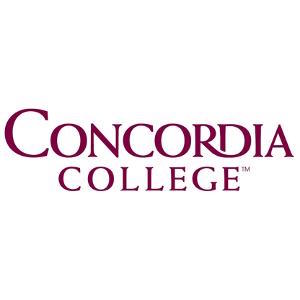
Concordia College is a private college in Moorhead, Minnesota that is not related to The Concordia University System or Concordia University St. Paul. Instead, this school is associated with the Evangelical Lutheran Church in America. It was founded on Halloween in 1891 by Norwegian settlers. At that time, there were only three faculty and 12 students. Their academic staff is now approaching 200 people, and there are over 2000 students. The college offers bachelors and masters degrees in over 50 different majors.
The curriculum is firmly centered on Christianity, and all undergraduate students are required to take courses in religion. They are also expected to take classes in the subjects of health, communication, and culture to fulfill the liberal arts requirement. Concordia boasts a very highly respected study abroad program, has four global education programs, and has courses in 9 different languages. Also, even though the majority of their students are Minnesota natives, there are students from 28 foreign countries in attendance. Their commitment to global engagement is so that students can “live in a global society and are passionate about making a difference in their communities.”
There are a wide variety of online courses available at this school, 100% of the students seeking a graduate degree are enrolled in at least one online course. The college also has agreements with Minnesota State University Moorhead and North Dakota State University that serves to diversify the online opportunities available to their students further, allowing them to study at either university for credit while enrolled at Concordia.
Concordia Website: https://www.concordiacollege.edu
Freshman Retention Rate: 80%
Graduation Rate: 68%
Final Score: 148/200
6. The College of Saint Scholastica
The College of Saint Scholastica is a private Catholic Benedictine university that is located in Duluth, Minnesota. Mother Scholastica Kerst relocated to Duluth in 1892 with a dream “that someday there will rise upon these grounds fine buildings like the great Benedictine abbeys. They will be built of stone: within their walls, higher education will flourish.” CSS was the result of that dream.
It began as a high school called Sacred Heart Institute, and in 1912 the curriculum expanded to include the first two-year degrees. That year, it took on its current name. The first bachelor’s degrees followed shortly after in 1926. By the 1970s, CSS was a fully coeducational institution accredited by the Higher Learning Commission. Students today can get certificates and degrees from the bachelor’s to doctoral levels in over 50 programs.
The College of Saint Scholastica comprises six main academic divisions, including the School of Arts and Letters, the School of Business and Technology, the School of Education, the School of Health Sciences, the School of Nursing, and the School of Sciences. There are currently 4,351 total students at CSS. In addition, 23% of the undergraduate students are pursuing a degree solely online, and 47% of the graduate students are doing so as well.
The online programs at The College of Saint Scholastica include:
- Accounting (B.A.)
- B.A./B.S. Computer Information Systems (CIS)
- Business Management (B.A.)
- Health Informatics and Information Management (B.S.)
- Marketing (B.A.)
- Nursing (RN to BS)
- Organizational Leadership (B.A.)
- Psychology (B.A.)
- Social Work (B.A.)
- Undecided/Self-Designed (B.A./B.S)
- Post-Baccalaureate Certificate in Health Information Management (HIM)
CSS Website: https://www.css.edu
Freshman Retention Rate: 81%
Graduation Rate: 69%
Final Score: 150/200
5. Martin Luther College
Martin Luther College is a private college that serves entirely as the college of ministry operated by the Wisconsin Evangelical Lutheran Synod and located in New Ulm, Minnesota. The college is fully accredited by the Higher Learning Commission and the Minnesota Board of Teaching. This school was established in 1995 by the merging of Northwestern College and Dr. Martin Luther College.
The sole purpose of Martin Luther College is to train students that have a calling to public ministry. The college offers bachelor’s and master’s degrees in the field of education, from early childhood education to educational administration. Several certificate programs are available and degree programs that will lead to a career as a pastor or minister.
According to the MLC mission, all courses and programs are created “according to the gospel” and “with the guidance of the Holy Spirit.”
Despite the laser focus on Christianity and education, students still have a variety of opportunities. Majors are offered in almost every core subject, even in music education and special education. Minors are offered in subjects such as Chinese, music, and more.
While MLC has a strict goal, the college strives to educate its students in a well-rounded way. Online programs are offered through the Continuing Education Department and include many different certificate programs and Micro-Credentials.
MLC Website: https://mlc-wels.edu
Freshman Retention Rate: 81%
Graduation Rate: 75%
Final Score: 156/200
4. Bethel University
Bethel University is a private Christian college in Arden Hills, Minnesota. The university is not affiliated with and not to be confused with the school of the same name in Tennessee. Bethel, as the school is often referred to, is affiliated with the Baptist Organization, Converge. However, their 4,016 students represent almost 70 different denominations and come from various ethnic backgrounds and cities around the world.
Bethel is one of the 13 member institutions of the Christian College Consortium and the Council for Christian Colleges and Universities, among which it ranks in the top five. It was founded in 1871 as a Baptist Seminary in Chicago, Illinois. In 1914 the seminary merged with Bethel Academy in St. Paul. A little over a decade later, the academy introduced a four-year liberal arts program and became Bethel College and Seminary. It began operating at the current campus in 1972 and adopted the title of Bethel University in 2004.
The university is made up of four different schools, through which it offers over 100 different degree programs. Bethel University awards licenses, certificates, and degrees at the undergraduate and graduate levels. The College of Arts & Sciences has 11 pre-professional programs. The other academic divisions are Bethel Seminary, the College of Adult & Professional Studies, and the Graduate School.
While there are a few undergraduate online offerings, Bethel truly shines with its online graduate programs. A sampling of these include:
- Academic Behavioral Strategist License
- Autism Spectrum Disorders License
- Doctor of Nursing Practice
- Ed.D. in Higher Education Leadership
- Ed.D. in K-12 Administration
- Emotional and Behavioral Disorders License
- International Baccalaureate Certificate in Teaching and Learning
- K-12 Principal License
- Master of Social Work
- Nurse-Midwifery
- Special Education: Autism Spectrum Disorders Concentration
- Strategic Leadership
The school also offers a fully online MBA with several concentrations, including:
- Finance
- Management
- Healthcare Administration
- Strategy and Execution
- Data, Economics, and Development Policy
- Principles of Manufacturing
- Statistics and Data Science
- Supply Chain Management
Bethel Website: https://www.bethel.edu
Freshman Retention Rate: 83%
Graduation Rate: 74%
Final Score: 157/200
3. Saint John’s University/College of Saint Benedict
The College of Saint Benedict is a women’s-only school in St. Joseph, Minnesota and Saint John’s University is a men’s-only college in Collegeville, Minnesota. They are both private Catholic Benedictine institutions, and through their cooperative relationship, they share their curriculum and resources. Saint John’s University was founded in 1857, and the College of Saint Benedict was created in 1913. They partnered in 1961, and now they provide the same academic programs, have a joint faculty, and together serve almost 4,000 students. The schools are usually referred to as CSBSJU collectively.
The institution is accredited by the Higher Learning Commission and has the overall mission to uphold Benedictine values and to be a place that prepares men and women to engage the world.
CSBSJU is one of few religious-affiliated institutions of higher learning that features an inclusive and encouraging code of student conduct. For example, they do not prohibit the use of alcohol or tobacco on campus, and they have stringent policies in place that prohibit discrimination on any basis. In addition, they are one of the only Catholic schools in the country to have a student organization for LGBTQ+ students.
The school is currently working on expanding its distance-learning programs. They offer an online version of most of their classes, and through strategic planning with a counselor, students can earn the majority of their degree online if they need to do so.
SJU Website: https://www.csbsju.edu/
Freshman Retention Rate: 85%
Graduation Rate: 74%
Final Score: 159/200
2. University of St. Thomas
The University of St. Thomas, or just St. Thomas, is a private Roman Catholic-affiliated university. Named after the patron saint of students, St. Thomas began as a Catholic seminary in 1885. It has two campuses in Minnesota, in St. Paul and Minneapolis. It is considered the ‘brother university’ of the University of St. Catherine because of its historical affiliation. St. Thomas was a men-only institution until 1977, and St. Kate’s was a women-only institution; students could take courses at either school if their particular area of study required a specific class.
The school awarded the first academic degrees in 1915, and now the university awards more than 2,000 a year. There are 9,920 students enrolled, which makes the university the largest of its kind in the USA. Students have a choice of almost 100 majors and five different bachelor’s degrees at the undergraduate level and more than 60 graduate degree programs in several other areas of study.
There are eight different academic divisions of St. Thomas. These are the College of Arts & Sciences; the Opus College of Business; the College of Education, Leadership, and Counseling; the St. Paul Seminary School of Divinity; the School of Engineering; the School of Law; the School of Social Work and; the Dougherty Family College.
St. Thomas offers several distance-learning programs. Some are available entirely online, while others use the blended format. A few of these include:
- Online MBA
- Graduate Certificate in Business Analytics
- MS in Health Care Innovation
- Master of Arts – Catholic Studies
- Certificate – Autism Spectrum Disorders
- Master of Arts – Special Education
- Ed.S. in Education Specialist
- STEM Graduate Certificate in Engineering Education
- Master of Studies in Law – Organizational Ethics and Compliance
- Master of Social Work
- Doctorate – Social Work
St. Thomas Website: https://www.stthomas.edu
Freshman Retention Rate: 87%
Graduation Rate: 80%
Final Score: 167/200
1. University of Minnesota
The University of Minnesota’s main campus is the Twin Cities branch. There is a campus in St. Paul and in Minneapolis, and the two are only 3 miles apart. The university is commonly abbreviated to UMN or even just Minnesota. UMN is the flagship university of the University of Minnesota System, and is a member of the Association of American Universities, and is ranked #14 out of 60 in their research efforts. The school is considered a Public Ivy, a rare distinction signifying that the quality of the education they can provide is on par with that of an Ivy League school.
In the Carnegie Classification of Institutions of Higher Education, UMN has the highest research activity classification. In fact, this top-rated university is the home of an astounding 25 Nobel Prize winners and 3 Pulitzer Prize winners. Faculty, students, alumni, and researchers associated with the university have been credited with the discovery, development, and invention of a variety of things such as photosynthesis, atomic bombs, open-heart surgery, the pacemaker, and so much more.
The academic divisions the university is divided into include: the Center for Allied Health Programs; the College of Biological Sciences; the College of Continuing Education; the School of Dentistry; the College of Design; the College of Education and Human Development; the College of Food, Agricultural and Natural Resource Sciences; the Graduate School; the Law School; the College of Liberal Arts; the Carlson School of Management; the Medical School; the School of Nursing; the College of Pharmacy; the Hubert H. Humphrey School of Public Affairs; the School of Public Health; the College of Science and Engineering and; the College of Veterinary Medicine.
There are over 51,000 students at UMN and almost 4,000 instructors! Among them are members of the National Academy of Sciences, the National Academy of Engineering, the Institute of Medicine, the American Academy of Arts and Sciences, and several other select organizations. They are winners of Nobel Prizes, MacArthur Fellowships, and more. This dedicated and highly educated group of people is committed to fostering the same excellence in their students. They are responsible for the instruction of the online courses available at UMN.
Not surprisingly, this number one college for online degrees offers over 60 different programs that can be taken remotely, including certificates and degrees at the undergraduate and graduate levels. Many of them offer the same tuition rate to students regardless of residency. The most popular online degree at UMN is the two-year MBA program.
UMN Website: https://twin-cities.umn.edu
Freshman Retention Rate: 93%
Graduation Rate: 84%
Final Score: 177/200
